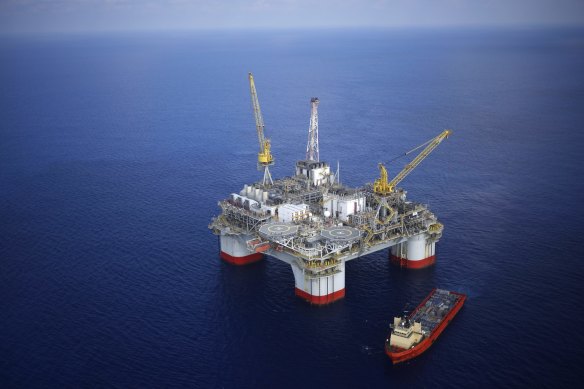Woodside’s major Mexican oil project under the spotlight
Australia’s largest gas and oil producer, Woodside, faces scrutiny over the financial feasibility of a major oil field in the Gulf of Mexico, as the global energy crunch makes big producers less shy of taking on and developing controversial projects.
Woodside, run by chief executive Meg O’Neill, inherited the Trion oil resource in Mexican waters after last year’s merger with BHP Petroleum, and is pushing ahead with technical and financial assessments for the deep-water development.

A decision on activating construction of the semi-submersible floating production unit – that will pump out up to 100,000 barrels of oil a day – is expected around mid-year, but analysts and corporate activists question whether Trion will meet the company’s internal rate of return hurdles and payback target of five years or less.
“We struggle to see the valuation in this asset,” Barrenjoey analyst Dale Koenders said.
“That doesn’t necessarily mean it won’t achieve the company’s stated returns thresholds, it just means our view at present is that it’s a marginal project.
“On our own forecast, we see that it is a tough call for the project to meet those thresholds the company has stated.”
The Australasian Centre for Corporate Responsibility, a responsible investment lobby group, released a report on Friday with forecasts for emissions and free cash flow that suggest Trion doesn’t meet Woodside’s standards.
“Even when valuing Trion based on an internal rate of return – which does not adjust for country risk – the project does not meet Woodside’s hurdle target of greater than 15 per cent for offshore oil projects,” the report said.
O’Neill told investors and shareholders last week that any decision on sanctioning new projects would be made in line with Woodside’s capital allocation framework.
“We have to be disciplined in our investment decisions, which are guided by our targets for expected return in addition to how they fit within the overall portfolio,” she said.

But the fossil fuel-focused company is clearly enthusiastic about the resource. “We are very excited about Trion. The technical work is well advanced as is the execution planning,” O’Neill said.
“In 2022, we completed front-end engineering design, or FEED, for the floating production unit. We issued key tender packages, and we are now evaluating the responses. We expect to select the floating production unit contractor within the first half of the year, ahead of a financial investment decision.”
The Perth-based company made $US6.50 billion ($9.65 billion) in profit for 2022 after it swallowed BHP’s petroleum assets and benefited from Europe’s scramble for non-Russian gas supplies, that pushed the average price of its oil and gas up by 63 per cent.
Credit Suisse analyst Saul Kavonic said while Trion was potentially economically viable, it came with other problems. “It is a project, which on our numbers, may achieve the hurdle rate that Woodside seek, but certainly not a compelling margin above that.”
The oil field is in a new jurisdiction where Woodside hasn’t operated and there were heightened political and environment, sustainability and governance risks, he said.
“Our view has been Woodside needs to be very careful with the Trion assessment because of the cost environment and ESG [environment, sustainability and governance] optics around it,” Kavonic said.
“It should also be compelling, not just acceptable economics, if you’re going to do a project in a new jurisdiction.”
When adjusting for country risk, discounted cash flow valuations suggested Trion would provide a limited upside of 23¢ to 35¢ a share, or about 1 per cent of Woodside’s market capitalisation, Australasian Centre for Corporate Responsibility lead analyst Alex Hillman said.
He said Trion was also exposed to other risks. Its joint venture partner, Pemex, has a poor financial, safety and operating record and has faced allegations of past corruption.
And there is ambiguity in the disclosed capital costs, specifically the carrying amount that Woodside will need to fund for Pemex.
The Gulf of Mexico faces extreme weather events that could reduce production, Hillman said, and these would escalate under climate change.
“It is difficult to see how shareholders win from Woodside spending $US4.6 billion on Trion. The project has weak economics, high emissions and a constellation of material downside risks,” he said.
Kavonic said resource companies were more circumspect two years ago, with limited appetite for challenging fossil-fuel projects that only just met their hurdle rates, were in new jurisdictions and involved drilling for oil.
“In today’s world, post-Ukraine amidst global energy insecurity, sentiment in the industry and market has shifted, and it’s become more favourable to actually bringing on new supply sources for oil and gas,” Kavonic said.
“That is what might be able to push Woodside over the line here.”
Most Viewed in Business
Source: Thanks smh.com